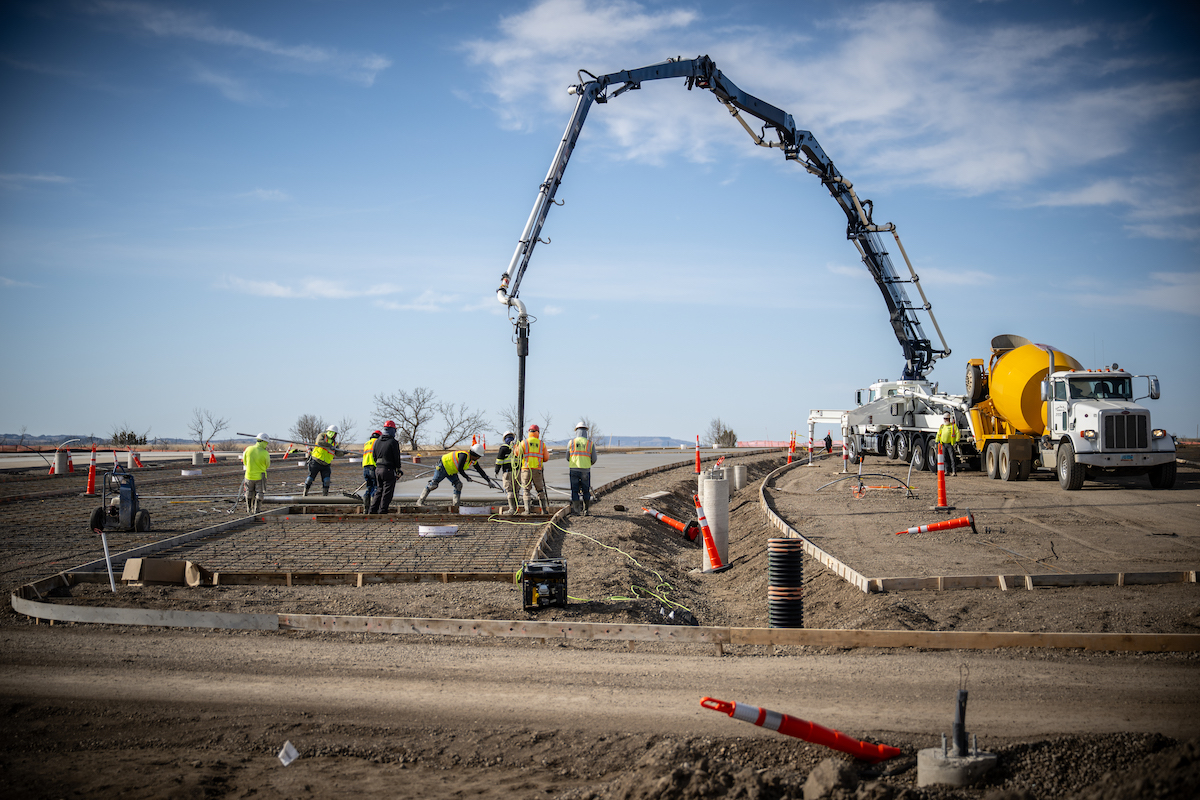It’s impressive to see how construction machinery for fleets has evolved in tandem with technology. Today’s excavators, pavers, backhoes, and bulldozers can all be programmed using CAD design drawings to operate more efficiently and effectively. Long gone are the days when engineers had to simply depend on craft workers in the field to get it right.
Yet as machinery has become more sophisticated, construction teams across the country have pondered the cost.
An early 2024 prediction by the Equipment Leasing and Finance Association said, “As the global equipment-as-a-service (EaaS) market is expected to grow at an annual compounded rate of around 50 percent through 2030, the market is beginning to see a shift with U.S. businesses that are increasingly employing a subscription-based model instead of purchasing construction equipment.”
The financial options to build a construction fleet have always been lease or buy. The final decision was based on several factors including business growth, short-term needs, and economic pressures that impact the bottom line.
Those factors still play into a smart growth strategy, but as interest rates increased in recent years, lease financing is an affordable option for accessing productive assets.

| Your local Link Belt dealer |
|---|
| Hayden-Murphy Equipment Co |
The best financing solution will vary by business needs and equipment type. Many businesses require certain core pieces of equipment as demands dictate, so those assets should be financed based on their life expectancy.
For these pieces, a capital lease — essentially a lease-to-own structure — is often the best option. Leasing equipment eliminates much of the risk that comes with scaling up fleets via direct purchase as growth continues. If job opportunities were to experience a major downturn, leasing allows businesses to simply return their equipment when the term is up. If the assets are purchased, that business could be stuck making payments on inoperative equipment for years to come.
But what about the higher interest rates in this unpredictable economic environment? While headlines tout the effect of the Federal Reserve’s rate cuts on the prime rate, our team prices based on Secured Overnight Financing Rate (SOFR) swaps when setting rates. At its basic level, this means that through our underwriting process clients have a fixed rate.
Why is this important? A variable rate tied to the prime rate may seem appealing based on current expectations that the Fed will cut rates. However, there’s no guarantee what the prime rate will be years from now. A fixed rate typically makes sense for most long-term loans so borrowers can be certain of their monthly fixed costs.

| Your local Gomaco dealer |
|---|
| Hayden-Murphy Equipment Co |
Reserving some cash flow and allowing room for short-term equipment rentals is also important in case a business lands significant contracts requiring a specialized piece of equipment that likely won’t be used for other jobs. The rapid and continual change in equipment technology is another key consideration to effectively structure a fleet.
Equipment fleets should ideally consist of a balance of owned, leased, rented, and EaaS. All four have many benefits and are part of a smart, forward-looking fleet financing strategy that is critical to maximizing profits and staying competitive.
While new equipment can offer improved efficiencies and often reduce costs down the road, financial analysis shows that in today’s rate environment, it might be hard to justify the upfront capital expenditure required for an outright purchase.
In many situations, it is just as beneficial to lease equipment rather than purchase it. For the right equipment, many businesses are arranging operating or capital leases to spread the expenditure over time. By financing equipment over years, you can ultimately save on costs and subsequently put more capital toward advanced technologies in more complex equipment.

| Your local Volvo Construction Equipment dealer |
|---|
| Nuss Truck & Equipment |
Deciding to buy, lease, rent, or use an EaaS model, as well as selecting different financing structures for different equipment types, should be an integral part of a smart fleet strategy that allows you to reinvest capital into ongoing growth.
In an industry that is ever-changing and evolving, it requires lots of options to make sure you’re always managing for success.
Tom White is Senior Account Manager at Summit Funding Group, a Cincinnati, Ohio, based lender specializing in lease financing in the construction industry.



































































